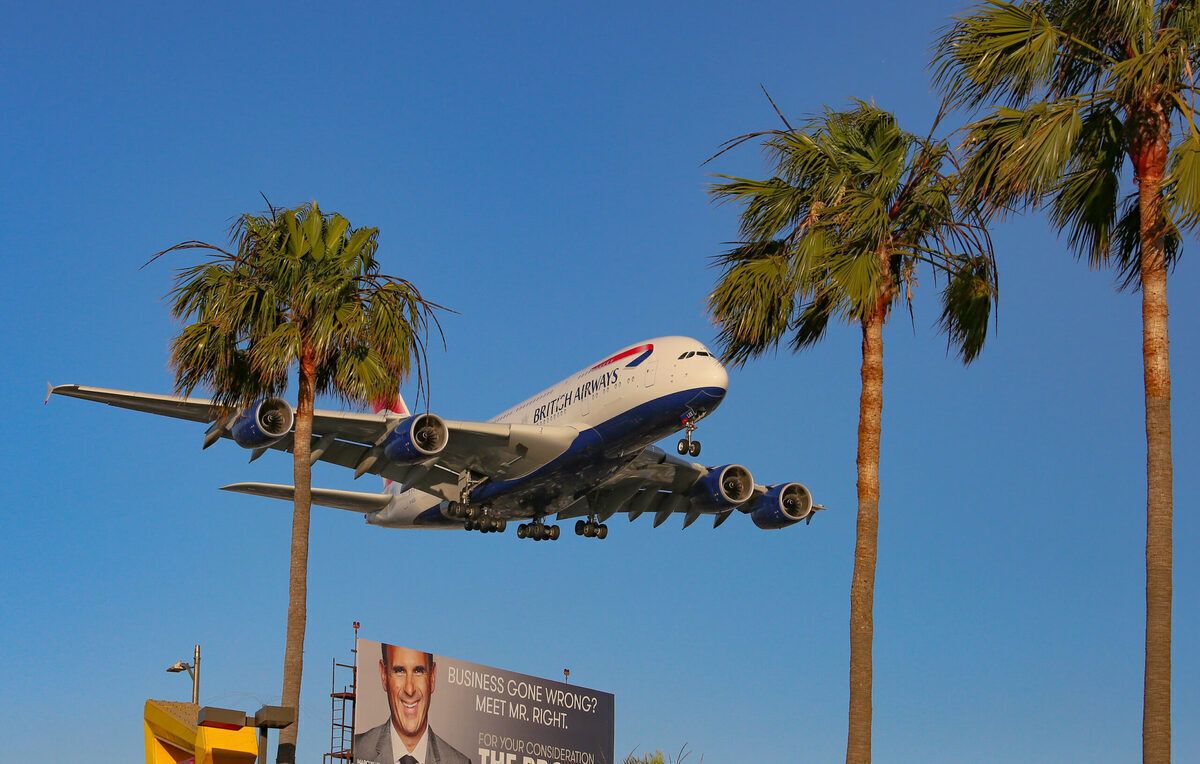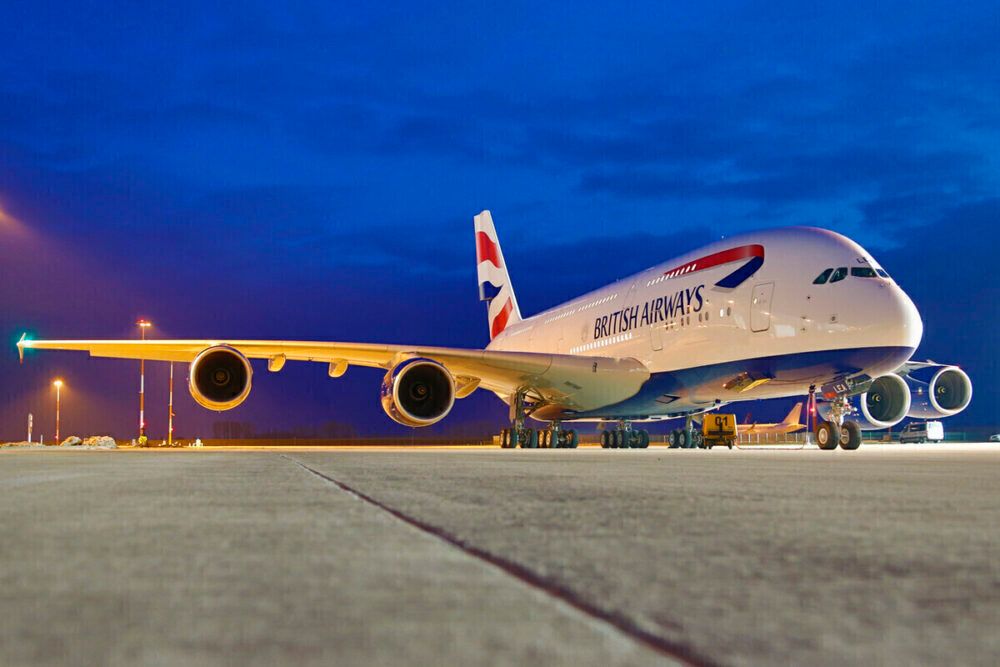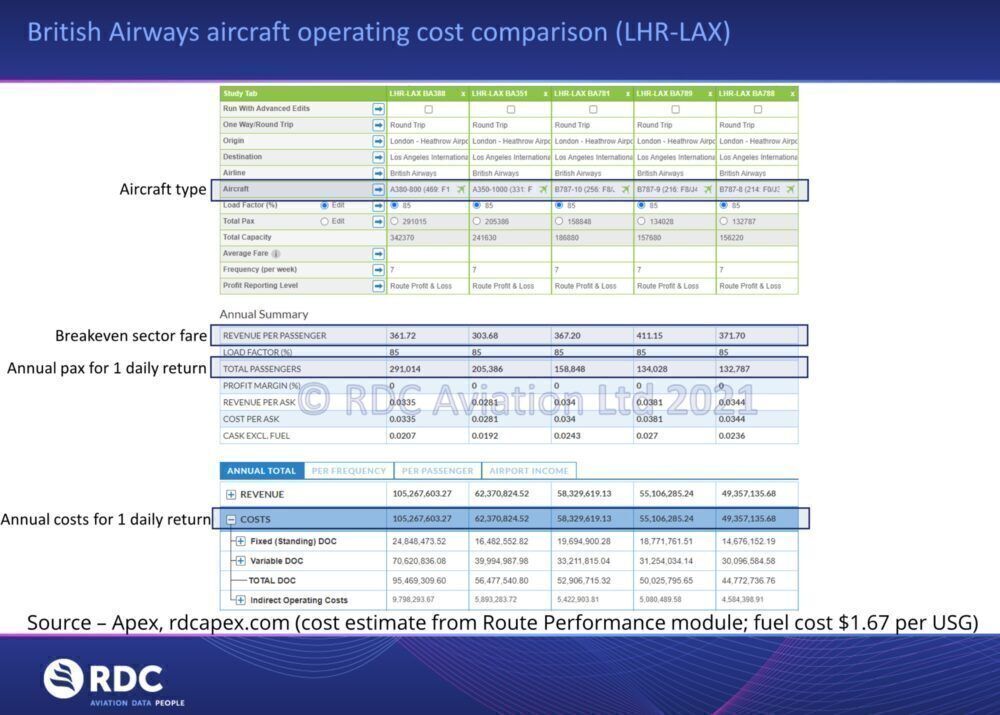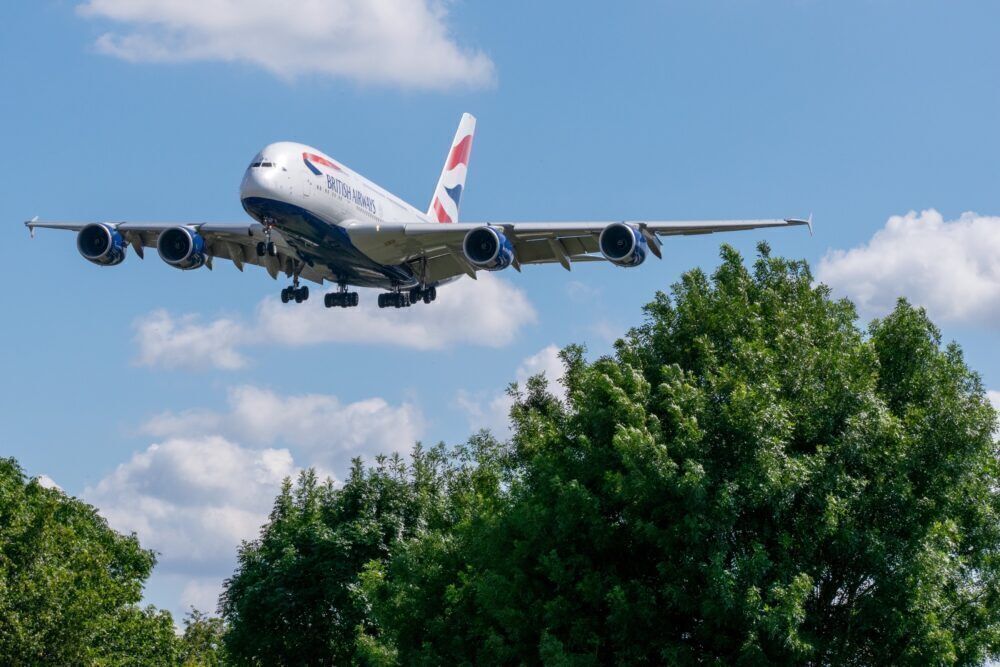British Airways remains committed to the A380, although it's not yet certain exactly when it'll return to service. One of the carrier’s biggest A380 markets is Los Angeles, with a daily round-trip costing about £105 million a year to operate, based on data from RDC Aviation. This is from accommodating many more passengers than other widebodies. We see what’s what.
In April, BA's CEO said that the A380 "works very well" for its needs. However, in the current environment, it seems unlikely that it will return to service this year, not helped by there being no travel corridor between the UK and US and the current lack of demand, particularly premium.
While the carrier has scheduled the A380 from Heathrow (LHR) this August to December – to Johannesburg (JNB), Los Angeles (LAX), Miami (MIA), and San Francisco (SFO) – the airline could likely cancel these.
BA's widebody costs to LAX
Operating the A380 on round-trip per day for a year would cost BA approximately £105 million ($148 million), according to RDC Aviation, the aviation data people. As you would expect, the A380 would be significantly more expensive to operate than other analyzed widebodies types: the A350-1000 (351); B787-10 (781); B787-9 (789); and the B787-8 (788).
Of course, this is just part of the story. The A380 accommodates many more passengers, with 138 more seats than the next-largest aircraft, the 351. It will obviously be far more expensive on a trip basis. However, crucially for BA – in normal times anyway – the A380 has many more premium seats. It has 111 in first and business, RDC Aviation shows, against:
- 56 for the 781 (both cabins)
- 56 for the 351 (only business)
- 50 for the 789 (both cabins)
- 35 for the 788 (only business)
Stay informed: Sign up for our daily and weekly aviation news digests.
The A380 has a lower breakeven fare
Of all three examined aircraft types with first-class cabins, the A380 has the lowest breakeven fare at an 85% seat load factor, RDC Aviation reveals. However, it requires between 83% and 117% more passengers to achieve that level.
At the moment, it seems improbable that so many premium seats, let alone 303 in economy, are presently required. In April, before the UK's traffic light system came into effect, just 5,477 round-trip passengers flew non-stop between Heathrow and Los Angeles, according to the UK CAA – down from 128,438 in 2019.
Looking ahead to August, BA will have 14 weekly departures to Los Angeles against 21 in 2019, which will help the case for the A380. This cut has pushed capacity down by a modest 15%, although that one airline still has over 10,000 seats to sell in one summer week. A travel corridor would also help, together with a straightforward testing regime.
Los Angeles to Heathrow
In 2019, before coronavirus struck, BA was one of five airlines to fly non-stop between LAX and LHR. However, Air New Zealand, which operated Auckland-LAX-LHR for many years, has since ceased serving Europe using its own metal.
Perhaps surprisingly, LAX-LHR barely grew between 2004 and 2019, with just 6% more seats available 15 years later, analyzing OAG data indicates. The market had seat capacity of almost 1.9 million in 2019, of which BA had the leading share with 35%. BA also had the highest seat load factor, with 87% recorded, based on the US’ T-100 data.
What are your thoughts on BA's A380s? Let us know in the comments.




